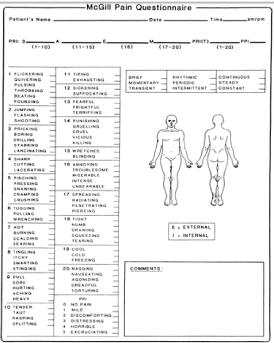Allison Jones
Introduction
As part of a larger project exploring homeschooling and educational anthropology, I conducted six semi-structured interviews with seven homeschooling parents in Montreal (five individuals and one couple) to learn more about their practice of homeschooling and the ideals behind it. Considering the small size of my sample, I do not claim to make any broad conclusions about homeschooling in Montreal or elsewhere. Nonetheless, these interviews highlighted a number of interesting themes, and raised a number of questions for potential future exploration, both of which will be outlined below.
Recruitment
I recruited participants for the interviews through a local homeschooling centre, Centre Communidée, both online and in person. I have been involved in Centre Communidée for the past 8 months, which provided me with a strong understanding of the organization and a sense of its community before I began my interviews. My research has been significantly influenced by my involvement at the centre and my relationships with people there; it is hard to consider my reflections on the centre ‘neutral’, but neither do I intend to unabashedly advocate my own interests. Thus, I hope that through examining the interviews I conducted in conjunction with previous literature on homeschooling, my analysis will provide the reader with insight into this small homeschooling community and the lives of some of its members.
My interviewees were recruited through Centre Communidée’s website and networks, and therefore my interviewees tended to have perspectives similar to those of the centre itself. This description, from the homepage of Centre Communidée’s website, gives a good sense of the mission of the organization. It reads:
Centre Communidée is a non-profit, non-religious, volunteer-run community centre for homelearning families. Membership fees are used to pay for rent, utilities and some supplies. Most activities are organized and run by people from our community, and are included in the membership fees.
All our activities are interest-based and are not designed to meet any educational requirements. As homeschooling families, you and your child are responsible for your child’s education. Communidée’s activities and workshops are offered as a supplement to your homeschooling experience. (“About the centre,” n.d.)
From this description a few key features are noticeable. First, the centre is explicitly ‘non-religious’ and the fact that activities are ‘interest-based’ suggests a pedagogical, child-led approach to homeschooling.1 Second, there is no link between Centre Communidée and the local school board; it is community-based and volunteer-run. Third, we get the sense that activities are more social than educational, and present an important aspect of families’ homeschooling methods.
Interview Findings
In my interviews, I found a relatively high level of consistency with previous homeschooling research in terms of family demographics, reasons for homeschooling, and methods and materials used. There is an abundance of different aspects of my findings that could be explored, but I have chosen to focus on themes from the interviews that have been largely absent from previous research.
The Importance of Reading. An interesting value that all but one parent mentioned was the importance of their children learning to read. I have not been able to find any research that explores homeschoolers and reading, despite the fact it was one of the most common issues that my interviewees brought up. Reading was seen as a way for children to take more control over their own learning and explore new topics. One parent summed it up as, “I thought if he can learn to read, then he can read about the other stuff.” This did not mean that all parents wanted their children to read at a young age (although some also expressed this sentiment), and two parents said that although their children had started reading later than they might have in school they did not see this as a problem. Nonetheless, reading was an underlying concern, and for many a ‘bottom line’ of what they wanted to teach their children.
Involvement in Centre Communidée. There has been little academic work written about homeschooling collectives, organizations, and centres. As my research grew from my involvement in Centre Communidée, I was curious about the role of this space in families’ lives. Four of the parents I interviewed were currently participating in activities at the centre, one had participated in the past, and one was hoping to do so soon. Parents identified two main reasons for participating in the centre. First, their children were involved in activities there, and enjoyed participating in them. Second, the centre was a space where parents provided each other with mutual support, both emotionally and practically. (For example, parents might babysit or teach each other’s children).
Diversity and Similarity at Centre Communidée. I asked the parents currently involved in Centre Communidée to comment on the diversity of the families that use the centre. One parent, who has been involved at the centre for a number of years, described:
In the sort of bigger picture of all the families that have come to the centre, if I sort of line all those people up, I would definitely find a fair amount of diversity. I mean, we have had religious families, we’ve had, you know, different races coming, different ethnic backgrounds, different philosophies of education, you know, all of that.
Despite the fact that the centre attracts a diverse group for one-off visits, it seems that the people who stay involved are fairly similar. While visiting and participating in the centre’s activities, the majority of those involved who I met were white, middle to upper-class, two-parent families in which the mother stayed at home and the father worked. The families usually take a child-led approach to homeschooling, and are often unschoolers.2 They also tend to share political beliefs, as one parent described:
I would say if you were going to look at it from a political point, most people would be fairly, more or less on the same page in terms of what they believe in. Like, what they believe the kids should eat, in terms of people’s rights, people’s, you know, they’re very more or less on the same page, supportive of women’s rights, gay rights. I assume that most of the people, I could be wrong, will more or less be together on that.
Different homeschooling approaches at times caused tensions or made other parents uneasy, though; as one parent said, “there’s some I respect enormously for what they seem to be achieving with their kids, and other ones it’s like they’re not involved.”
Attending School in Future. When asked whether they thought their children would attend school in the future, there was a marked difference between those who had been homeschooling for a longer or shorter amount of time. The five parents who had been homeschooling the longest tended responded along similar lines to this parent: “[We’re] not opposed to [our children going to school], but I would say probably more at the university or the CEGEP level rather than before.” Almost all parents indicated at least some interest in having their children attend higher education.
The two parents who had been homeschooling for a shorter time indicated a stronger expectation that their children would return to school sooner rather than later. In both cases, they had removed their children from school due to specific negative experiences and said they would not enroll their children in the same schools again. One expressed a desire for their child to attend an alternative school.
Feelings Towards School. More generally, then, what were the feelings expressed towards school by interviewees? One of the parents who expects their child to return to school in the near future described:
I guess my feeling is that I don’t feel strongly that schools are terrible and wrong and bad and oh-my-goodness. I think there are things that should be changed and should be different, that could be more effective and wonderful and good, but I don’t think that they’re this terrible thing either.
This perspective was fairly typical of those interviewed, who saw schools as having flaws, but also saw those flaws as fixable. Another parent described, “well, homeschooling isn’t perfect, and school isn’t perfect, so you have to weigh the pros and cons, that’s what I’ve discovered.”
Critiques of schools tended to focus on the methods used and on the fact that teachers are very overworked, and therefore have a difficult job to attend to the needs of 25 or 30 students simultaneously. Some parents felt that schools were too rigid in their methods, and not representative of how contemporary society works. For example, “school systems that teach this material, and this curriculum, and this so the kids end up with this, are doing everybody a disservice because society doesn’t work that way any more.”
A common feeling for those parents whose children had attended school in the past was that the schools were slow to respond to specific problems, especially bullying and poor teaching. A number of parents also identified their own school experiences as negative in some aspect, whether simply boring, riddled with poor teachers, or focused on useless material.
Suggestions for Change. Parents made suggestions both about improvements that could be made to schools as well as improvements that could be made to policy regarding homeschooling. A number of parents proposed that school boards should offer support to registered homeschoolers, but recognized such support might come with strings attached. One parent elaborated more on the fears they have about such a program, stating they were against any method that linked a family’s right to homeschool to their children’s performance:
So they say we’re going to evaluate your kid to see if you have the right to homeschool, if your kid doesn’t fare well, you don’t have the right to homeschool him? Like, that is just wrong to me. Because, even though my kids are shining little geniuses who will do just fine in the world, not everybody has such little treasures, you know. And some kids have a hard time learning one thing or another, or are different from, you know.
Other parents advocated more cooperative, grassroots relationships between homeschoolers and schools. For example, one described:
The idea of Communidée is a great idea, it should be standard, it would be really great if there was something tacked on to the existing school system, where they allow them to use the gym, or arts and crafts class…I think homeschooling partnerships with schools would be beneficial to everybody. Because I think the kids that are homeschooled would get a lot out of it, but I also think the school kids would see a different point of view.
Three parents suggested that they would also like to have the option of sending their children to school part-time in order to get basic instruction, and then be able to do activities as a family or outside of the school for the rest of the day. One parent described:
I think that is really the way to do it, to have the discipline of doing two hours of good, intensive schooling, where you can give them all the information they need at their level and probably beyond, and have the rest of the time to do whatever you want. I think that’s the approach I would like to go to.
While this depiction, emphasizing ‘intensive’ schooling, may be more rigorous than some homeschooling families would accept, the idea of not having to go to school full-time, in order to be able to do other things, was shared with others.
Suggestions for changes that could be made to the current system were described in all interviews. Parents clearly identified what was working for them about homeschooling, what they missed from schools, and what they imagined could cater to families’ diverse needs. Despite these ideas, though, only one seemed involved in homeschooling organizations that were making concrete demands of the government in order to help such changes materialize.
Implications of Findings
Overall, my interview findings were consistent with previous research on homeschooling. My interviewees fit the demographic portrait of Canadian homeschoolers put forth by previous authors (Ray, 1994; Smith, 1993; and Van Pelt, 2003). Research that has shown the tendency for change in homeschooling families over time, in methods, materials, and philosophies (such as the work of Arai, 2000; Chapman & O’Donoghue, 2000; and Van Galen, 1988), seems very applicable to this group of families, who generally focused on flexibility and practicality in their homeschool practice. Interviewees also fit the portrait of Quebecois homeschoolers given by Brabant, Bourdon, and Jutras (2005), which highlighted family-centred practices and ideals and a high level of animosity towards school boards and homeschooling registration.
There were a few topics that I found came up frequently in my interviews that are not discussed in other homeschooling research and would make interesting future topics of inquiry.
First, the increasing presence of homeschooling centres and the ways in which they act similarly and dissimilarly to schools in the lives of homeschoolers has largely been unexplored. While Centre Communidée serves more pedagogical homeschoolers, authors have also noticed a trend in the US for religious homeschoolers to create charter schools (particularly in California) in order to use state resources to purchase curriculum and support their homeschooling practice (Hill, 2000). What do homeschooling families find different about homeschooling centres and charter schools from the mainstream school system that makes them interested in being involved in the former, but not the later? Why might some homeschooling families not want to be involved in these homeschooling community groups either? How does diversity, in demographics as well as values, affect families’ participation in homeschooling centres?
Second, the sole skill that almost all families mentioned they want their children to learn is reading. Of course, reading is a very common skill in Canada, and one that is incredibly useful in many ways, but so are other many other skills (cooking, using technology, conversing, and problem-solving come to mind). Why then, was reading highlighted so prominently?
Third, many interviewees suggested that although they doubt their children will ever attend school, they do expect their children may want to attend university. How does university differ from other forms of schooling? Why is that more attractive for homeschooling parents?
Fourth, these parents articulated clear desires for a changed and improved state response to homeschooling. How might these desires be addressed in systemic reform of the education system in Canada? How can a better balance be found between state interests and family practices? Do homeschooling parents think about how the absence of their children from school may impact institutions of public education?
The research I conducted was not targeted enough at a specific issue, nor was it conducted with sufficient interviewees, in order to draw new conclusions about these realms of homeschooling. It does, however, indicate areas where existing literature does not account for the diverse and personal experiences of different families.
Conclusion
Much research has been done on homeschooling in the past fifty years as it has fluctuated between being a counter-cultural practice of leftists and hippies, a rejection of secular schools by religious fundamentalists, and a last-choice for parents whose children suffer rather than flourish in a traditional classroom. Previous research has tended to focus on why parents homeschool, what homeschooling families do all day long, and what are the demographics of homeschoolers. In this project, my interviews allowed me to explore the breadth of homeschooling, looking both at these areas as well as themes that have been unexplored so far. Those that I have summarized present avenues to be explored in future, which may tell us not only about homeschooling but also about schools, community, and larger values in our society. They are therefore important in terms of building a broader understanding of the role of education in our lives, and adapting ourselves to the variations in how that education may occur.
1 In a model proposed by Van Galen (1988), homeschooling families or groups are often referred to as either ‘pedagogical’ or ‘ideological’. Ideologues are religiously motivated homeschoolers, whose main critique of the school system is the ideological content of the curriculum (see for example Moore & Moore, 1979; Moore & Moore, 1981). On the other hand, pedagogues believe that schools are incompetent at teaching, and have a strong respect for the creativity and independence of children. They choose to homeschool in order to nurture this creativity and independence in a freer environment (see Holt, 1964, 1981, 1989; Neill, 1960). This model has been challenged by a number of other authors for being over-simplistic (see for example Arai, 2000), but nonetheless captures an important and basic divide in the homeschooling community.
2 Unschooling, in its most extreme form, is a version of homeschooling in which children have absolute autonomy and authority over their own lives, do what they want when they want, determine their own interests and schedules, and are free from any parental constraints on their behaviour or education. In a more moderate form, it refers to homeschooling in which children do self-directed learning, but parents may have a say in other aspects of their lives. This second form of unschooling was more represented in those homeschoolers I interviewed.
References
About the centre. (n.d.) Retrieved April 24, 2013, from
http://montrealhomelearners.ca/
communidee/
Arai, A. B. (2000). Reasons for home schooling in Canada. Canadian Journal of Education, 25(3), 204-217.
Brabant, C., Bourdon, S., & Jutras, F. (2005). Home education in Quebec: Family first. Evaluation and Research in Education, 18(3), 112.
Chapman, A., & O’Donoghue, T. A. (2000). Home Schooling: An emerging research agenda. Education Research And Perspectives, 27, 19-36.
Hill, P. T. (2000). Home schooling and the future of public education. Peabody Journal of Education, 75(1-2), 20-31.
Holt, J. C. (1964). How children fail. New York, NY: Pitman.
Holt, J. C. (1981). Teach your own: A hopeful path for education. New York, NY: Delacorte Press.
Holt, J. C. (1989). Learning all the time. Reading, MA: Addison-Wesley.
Miller, R. (2002). Free schools, free people: Education and democracy after the 1960s. Albany, NY: State University of New York Press.
Moore, R. S., & Moore, D. N. (1979). School can wait. Provo, UT: Brigham Young University Press.
Moore, R. S., & Moore, D. N. (1981). Home grown kids: A practical handbook for teaching your children at home. Waco, TX: Word Books.
Neill, A. S. (1960). Summerhill: A radical approach to child rearing. New York, NY: Hart Publishing Company.
Ray, B. D. (1994). A nationwide study of home education in Canada: Family characteristics, student achievement, and other topics. Salem, OR: National Home Education Institute, Western Baptist College.
Smith, S. D. (1993). Parent-generated home study in Canada: The national outlook 1993. New Brunswick: Francombe Place/Research Associates.
Van Galen, J. A. (1988). Ideology, curriculum, and pedagogy in home education. Education and Urban Society, 21(1), 52-68.
Van Pelt, D. (2003). Home education in Canada: A report on the Pan-Canadian study on home education 2003. Medicine Hat, AB: Canadian Centre for Home Education.





